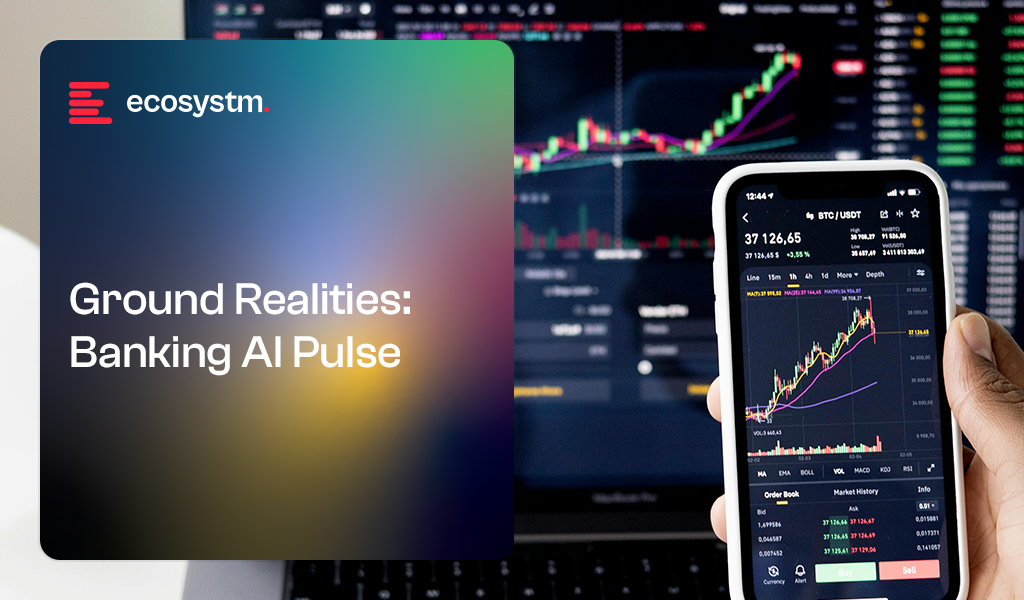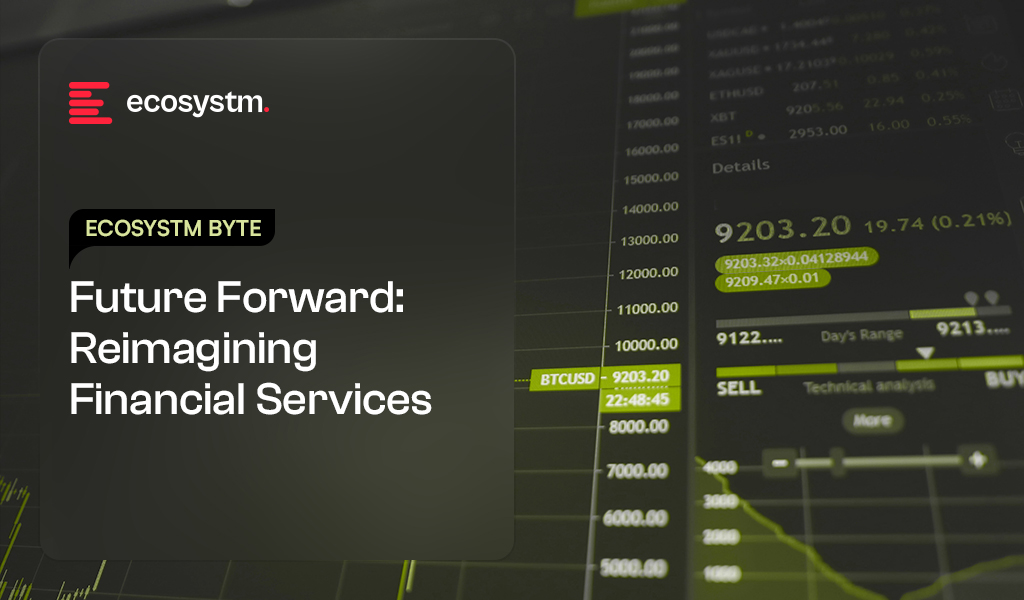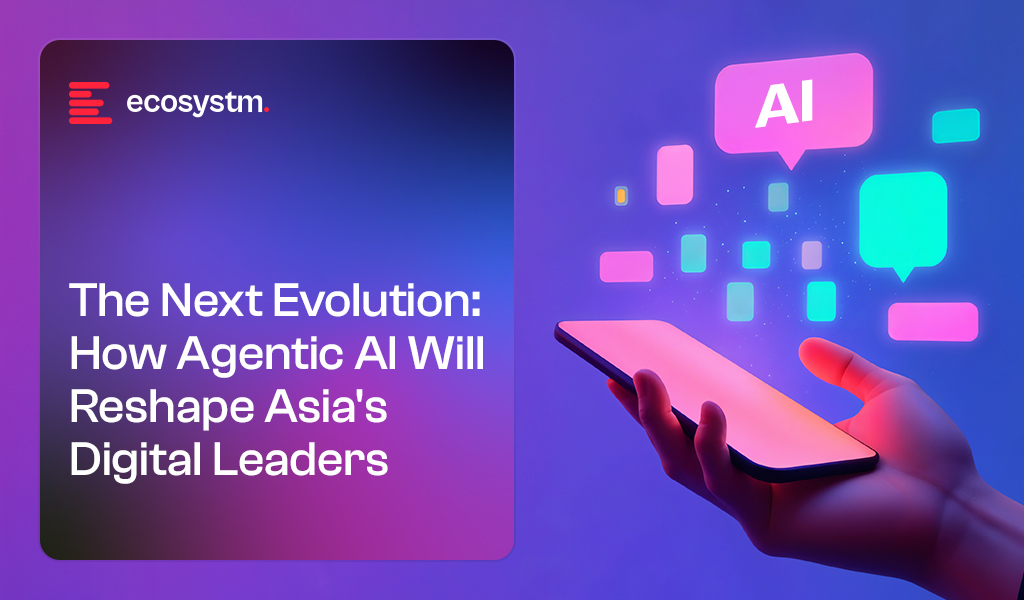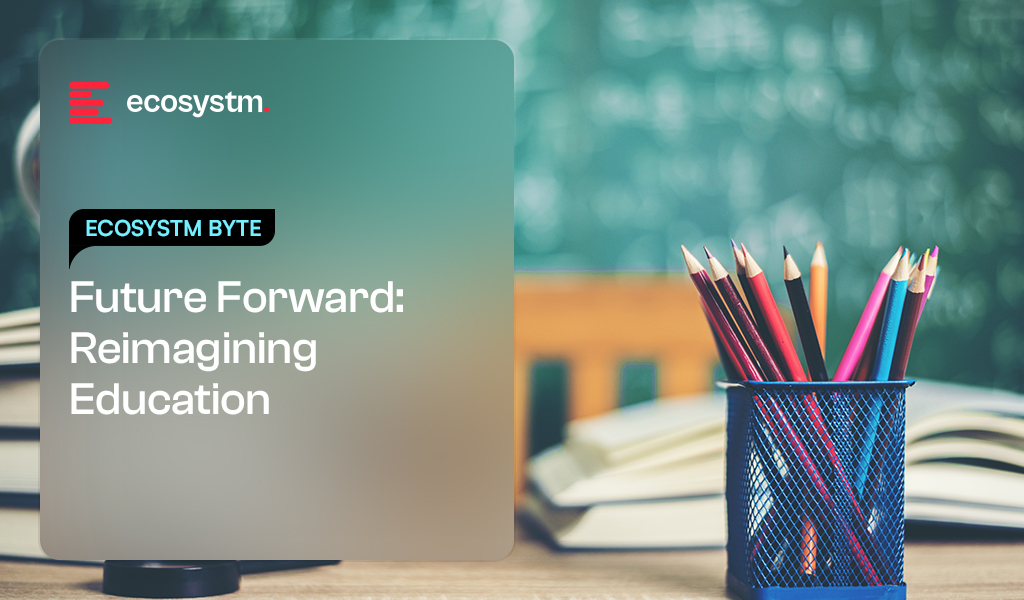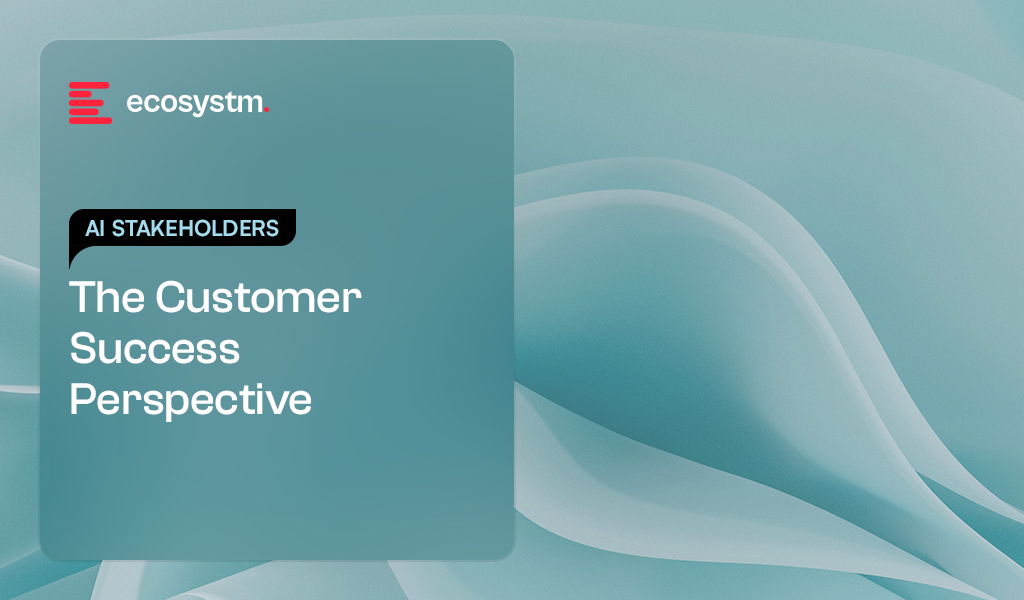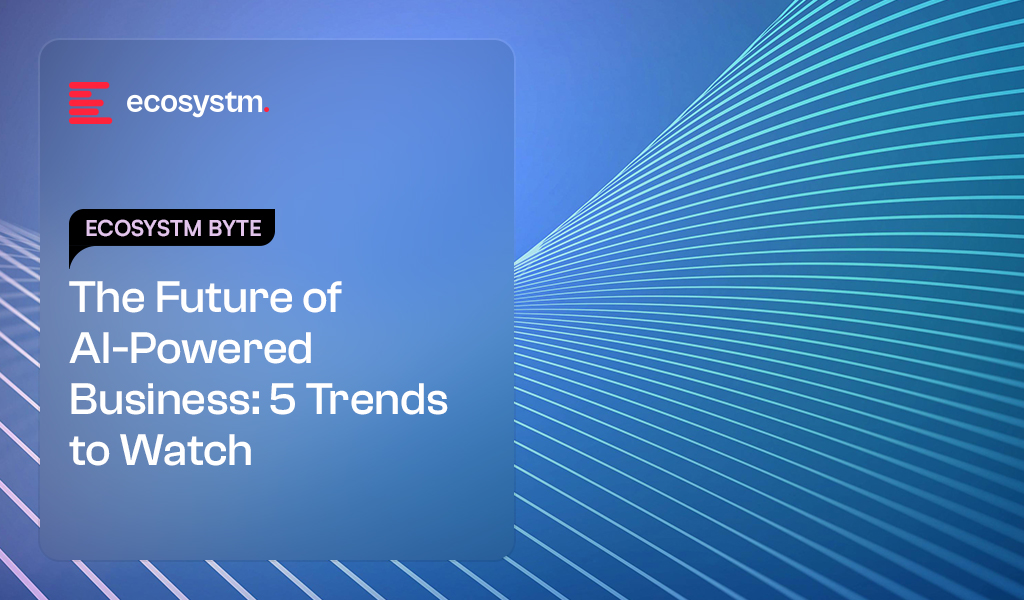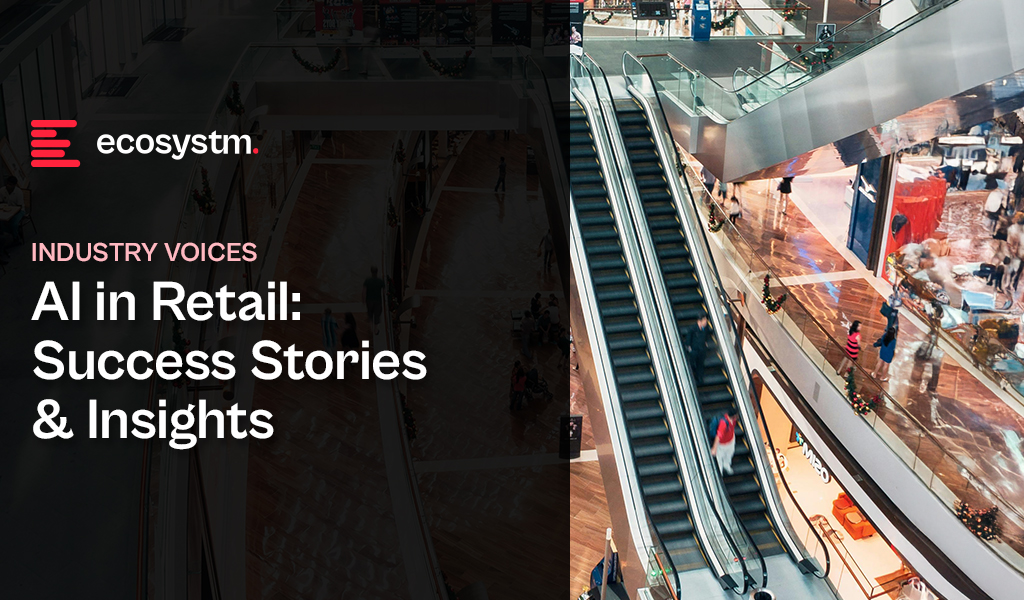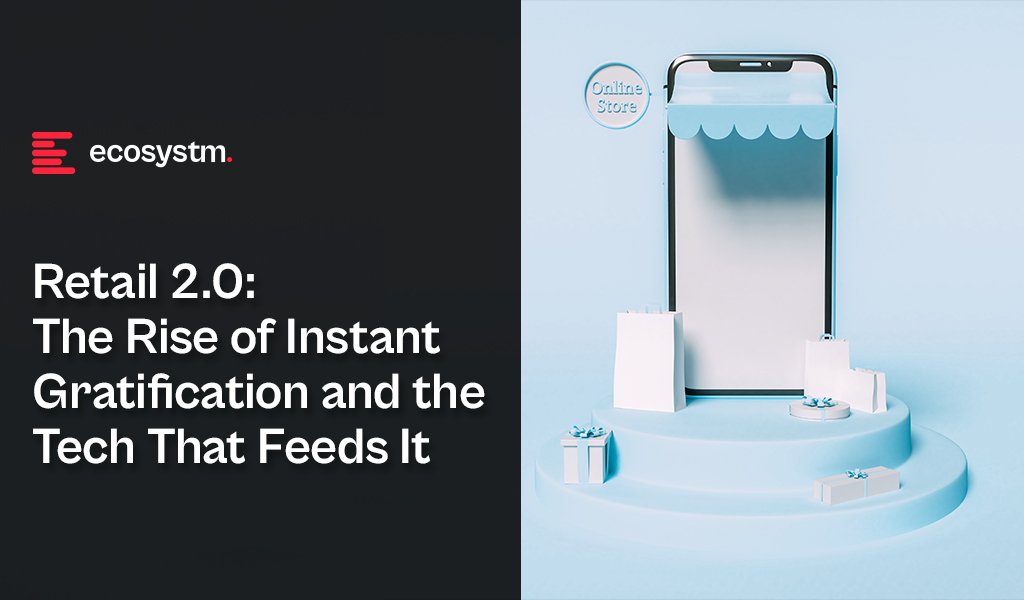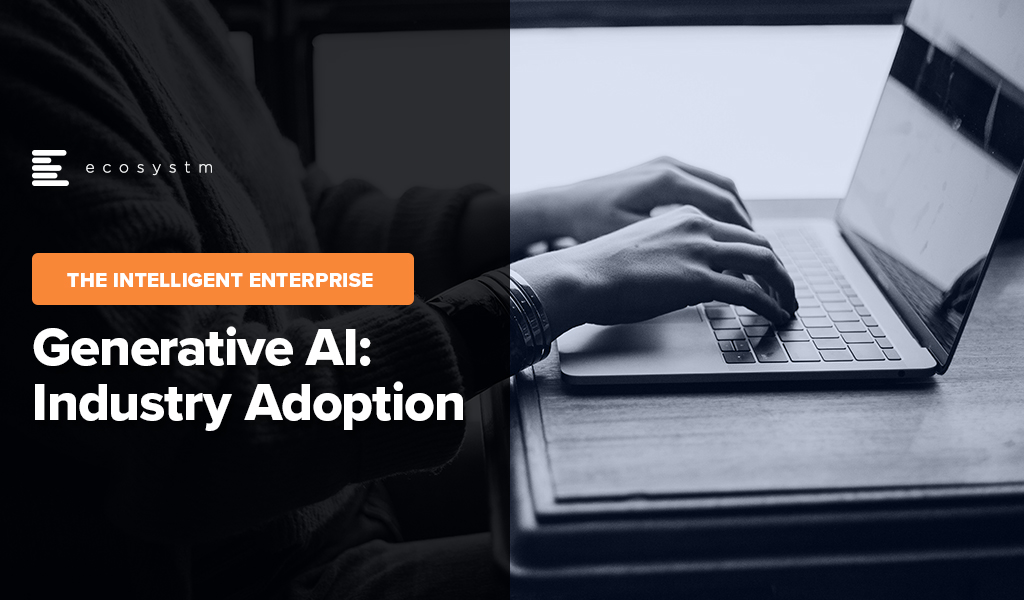Consider the sheer volume of information flowing through today’s financial systems: every QR payment, e-KYC onboarding, credit card swipe, and cross-border transfer captures a data point. With digital banking and Open Banking, financial institutions are sitting on a goldmine of insights. But this isn’t just about data collection; it’s about converting that data into strategic advantage in a fast-moving, customer-driven landscape.
With digital banks gaining traction and regulators around the world pushing bold reforms, the industry is entering a new phase of financial innovation powered by data and accelerated by AI.
Ecosystm gathered insights and identified key challenges from senior banking leaders during a series of roundtables we moderated across Asia Pacific. The conversations revealed a clear picture of where momentum is building – and where obstacles continue to slow progress. From these discussions, several key themes emerged that highlight both opportunities and ongoing barriers in the Banking sector.
1. AI is Leading to End-to-End Transformation
Banks are moving beyond generic digital offerings to deliver hyper-personalised, data-driven experiences that build loyalty and drive engagement. AI is driving this shift by helping institutions anticipate customer needs through real-time analysis of behavioural, transactional, and demographic data. From pre-approved credit offers and contextual investment nudges to app interfaces that adapt to individual financial habits, personalisation is becoming a core strategy, not just a feature. This is a huge departure from reactive service models, positioning data as a long-term strategic asset.
But the impact of AI isn’t limited to customer-facing experiences. It’s also driving innovation deep within the banking stack, from fraud detection and SME loan processing to intelligent chatbots that scale customer support. On the infrastructure side, banks are investing in agile, AI-ready platforms to support automation, model training, and advanced analytics at scale. These shifts are redefining how banks operate, make decisions, and deliver value. Institutions that integrate AI across both front-end journeys and back-end processes are setting a new benchmark for agility, efficiency, and competitiveness in a fast-changing financial landscape.

2. Regulatory Shifts are Redrawing the Competitive Landscape
Regulators are moving quickly in Asia Pacific by introducing frameworks for Open Banking, real-time payments, and even AI-specific standards like Singapore’s AI Verify. But the challenge for banks isn’t just keeping up with evolving external mandates. Internally, many are navigating a complicated mix of overlapping policies, built up over years of compliance with local, regional, and global rules. This often slows down innovation and makes it harder to implement AI and automation consistently across the organisation.
As banks double down on AI, it is clear that governance can’t be an afterthought. Many are still dealing with fragmented ownership of AI systems, inconsistent oversight, and unclear rules around things like model fairness and explainability. The more progressive ones are starting to fix this by setting up centralised governance frameworks, investing in risk-based controls, and putting processes in place to monitor things like bias and model drift from day one. They are not just trying to stay compliant; they are preparing for what’s coming next. In this landscape, the ability to manage regulatory complexity with speed and clarity, both internally and externally, is quickly becoming a competitive edge.

3. Success Depends on Strategy, Not Just Tech
While enthusiasm for AI is high, sustainable success hinges on a clear, aligned strategy that connects technology to business outcomes. Many banks struggle with fragmented initiatives because they lack a unified roadmap that prioritises high-impact use cases. Without clear goals, AI projects often fail to deliver meaningful value, becoming isolated pilots with limited scalability.
To avoid this, banks need to develop robust return-on-investment (ROI) models tailored to their context — measuring benefits like faster credit decisioning, reduced fraud losses, or increased cross-selling effectiveness. These models must consider not only the upfront costs of infrastructure and talent, but also ongoing expenses such as model retraining, governance, and integration with existing systems.
Ethical AI governance is another essential pillar. With growing regulatory scrutiny and public concern about opaque “black box” models, banks must embed transparency, fairness, and accountability into their AI frameworks from the outset. This goes beyond compliance; strong governance builds trust and is key to responsible, long-term use of AI in sensitive, high-stakes financial environments.

4. Legacy Challenges Still Hold Banks Back
Despite strong momentum, many banks face foundational barriers that hinder effective AI deployment. Chief among these is data fragmentation. Core customer, transaction, compliance, and risk data are often scattered across legacy systems and third-party platforms, making it difficult to access the integrated, high-quality data that AI models require.
This limits the development of comprehensive solutions and makes AI implementations slower, costlier, and less effective. Instead of waiting for full system replacements, banks need to invest in integration layers and modern data platforms that unify data sources and make them AI-ready. These platforms can connect siloed systems – such as CRM, payments, and core banking – to deliver a consolidated view, which is crucial for accurate credit scoring, personalised offers, and effective risk management.
Banks must also address talent gaps. The shortage of in-house AI expertise means many institutions rely on external consultants, which increases costs and reduces knowledge transfer. Without building internal capabilities and adjusting existing processes to accommodate AI, even sophisticated models may end up underused or misapplied.

5. Collaboration and Capability Building are Key Enablers
AI transformation isn’t just a technology project – it’s an organisation-wide shift that requires new capabilities, ways of working, and strategic partnerships. Success depends on more than just hiring data scientists. Relationship managers, credit officers, compliance teams, and frontline staff all need to be trained to understand and act on AI-driven insights. Processes such as loan approvals, fraud escalations, and customer engagement must be redesigned to integrate AI outputs seamlessly.
To drive continuous innovation, banks should establish internal Centres of Excellence for AI. These hubs can lead experimentation with high-value use cases like predictive credit scoring or real-time fraud detection, while ensuring that learnings are shared across business units. They also help avoid duplication and promote strategic alignment.
Partnerships with fintechs, technology providers, and academic institutions play a vital role as well. These collaborations offer access to cutting-edge tools, niche expertise, and locally relevant AI models that reflect the regulatory, cultural, and linguistic contexts banks operate in. In a fast-moving and increasingly competitive space, this combination of internal capability building and external collaboration gives banks the agility and foresight to lead.


The financial services sector stands at a pivotal moment. Shaped by shifting customer expectations, fintech disruption, and rising demands for security and compliance, the industry is undergoing deep, ongoing transformation. From personalised digital engagement to AI-driven decisions and streamlined operations, BFSI is being fundamentally reshaped.
To thrive in this intelligent, interconnected future, financial organisations must embrace new strategies that turn challenges into opportunities.
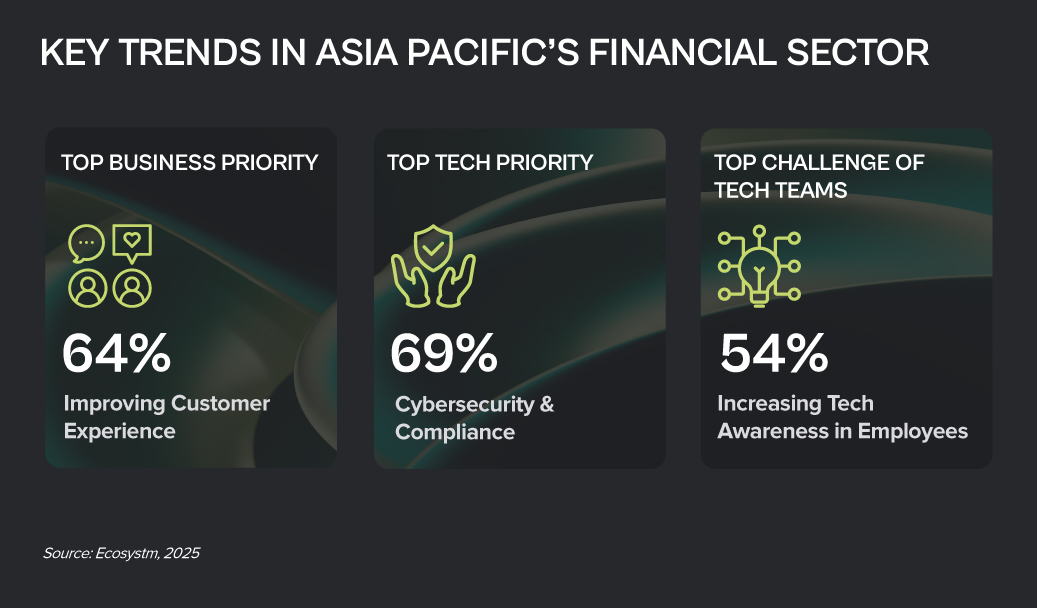
Click here to download “Future Forward: Reimagining Financial Services” as a PDF.
Scaling for Impact
CreditAccess Grameen, a leading microfinance institution in India, struggled to scale its operations to meet the rising demand for microloans. Its manual processes were inefficient, causing delays and hindering its ability to serve an expanding customer base.
To overcome this, CreditAccess Grameen digitised its operations, automating processes to handle over 80,000 loans per day, streamlining loan approvals and improving operational efficiency.
This transformation significantly reduced loan processing times, from seven to ten days down to a more efficient, timely process. It also enhanced customer satisfaction, empowered financial independence, and strengthened CreditAccess Grameen’s position as a leader in financial inclusion, driving economic growth in rural India.
Seamless Operations, Improved Reporting
After merging three separate funds, Aware Super, one of Australia’s largest superannuation funds, faced fragmented operations, inconsistent documentation, and poor visibility into workflows. These inefficiencies hampered the organisation’s ability to optimise operations, ensure compliance, and deliver a seamless member experience.
To overcome this, Aware Super implemented a business process management suite to standardise and automate key processes, providing a unified platform for continuous improvement.
The transformation streamlined operations across all funds, improving reporting accuracy, reducing waste, and boosting procurement efficiency. The creation of a Centre of Excellence fostered a culture of ongoing process improvement and regulatory compliance, elevating Aware Super’s process maturity and solidifying its leadership in the financial services sector.
Empowering Employees and Improving Operations
The Norinchukin Bank, a major financial institution serving Japan’s agriculture, forestry, and fisheries sectors, struggled with outdated, paper-based processes and disconnected systems. Manual approvals and repetitive data entry were hindering operations and frustrating staff.
The digital team implemented a low-code platform that quickly automated approvals, integrated siloed systems, and streamlined processes into a single, efficient workflow.
The results were striking: approval times dropped, development cycles halved, and implementation costs fell by 30% compared to legacy upgrades. Employees gained real-time visibility over requests, cutting errors and speeding decisions. Crucially, the shift sparked a wave of digital adoption, with teams across the bank now embracing automation to drive further efficiency.
Eliminating Handoffs, Elevating Experience
Axis Bank, one of India’s largest private sector banks, struggled with slow, manual corporate onboarding processes, which hindered efficiency and customer satisfaction. The bank sought to streamline this process to keep up with growing demand for faster, digital services.
The bank implemented a robust API management solution, automating document handling and onboarding tasks, enabling a fully digital and seamless corporate client experience.
This transformation reduced corporate onboarding time by over 50%, eliminated manual handoffs, and enabled real-time monitoring of API performance, resulting in faster service delivery. As a result, Axis Bank saw a significant increase in customer satisfaction, a surge in API traffic, and a deeper, more loyal corporate client base.
Taming Latency, Unleashing Bandwidth
WebSpace, renowned for its in-store payment systems, faced challenges as it expanded to wholesalers. The migration to a new architecture required low-latency cloud connectivity, but its legacy network, relying on hardware routers, caused performance slowdowns, complexity, and high costs.
WebSpace adopted a cloud-based routing solution, replacing physical routers with a virtual, automated system for multicloud connectivity, enabling on-demand configuration changes from a central control point.
With the new solution, WebSpace achieved faster cloud connectivity, reducing latency and increasing bandwidth. The modern, agile network reduced management costs and complexity, while usage-based billing ensured that WebSpace only paid for the resources it used, supporting its strategic expansion and enhancing overall efficiency.

Asia is undergoing a digital renaissance. Central to this transformation is the rise of digital natives: companies born in the digital era, built on cloud infrastructure, powered by data, and guided by customer-centric agility. Unlike traditional businesses retrofitting technology onto old models, Asia’s digital natives have grown up with mobile-first architecture, software-as-a-service models, and a mindset of continuous iteration. They’re not merely disrupting — they are reshaping economies, industries, and even governance.
But we are seeing a new wave of change. The rise of Agentic AI – autonomous, multi-agent systems that handle workflows, decision-making, and collaboration with minimal human input – is set to redefine industries yet again. For digital natives, embracing Agentic AI is no longer optional. Those who adopt it will unlock unprecedented automation, speed, and scale. Those who don’t risk being leapfrogged by competitors operating faster, smarter, and more efficiently.
The path forward demands evolution and collaboration. Digital natives must upgrade their capabilities, while large tech vendors must shift from selling solutions to co-creating them with these agile players. Together, they can accelerate time-to-market and build future-ready ecosystems.
Reimagining Scale and Customer Experience
Asia’s digital natives have already proven that scale and localisation are not mutually exclusive. Grab, for instance, evolved from a ride-hailing app into Southeast Asia’s super-app by integrating services that reflect local habits, from hawker food delivery in Singapore to motorcycle taxis in Indonesia.
Rather than building physical infrastructure, they leverage platforms and cloud-native tools to reach millions at low marginal cost. AI has been their growth engine, powering hyper-personalisation and real-time responsiveness. Shopee dynamically tailors product recommendations, pricing, and even language options to create user experiences that feel “just for me.”
But with Agentic AI, the bar is rising again. The next leap isn’t just personalisation; it’s orchestration. Autonomous systems will manage entire customer journeys, dynamically adjusting pricing, inventory, and support across markets in real-time. Digital natives that embrace this will set new standards for customer responsiveness and operational scale.
To navigate this leap, co-creating AI solutions with tech partners will be crucial. Joint innovation will enable digital natives to move faster, build proprietary capabilities, and deliver richer customer experiences at scale.
Reshaping Work, Operations, and Organisational Models
Digital natives have long redefined how work gets done, breaking down silos and blending technology with business agility. But Agentic AI accelerates this transformation. Where AI once automated repetitive tasks, it now autonomously manages workflows across sales, legal, HR, and operations.
Tokopedia, for example, uses AI to triage customer queries, detect fraud, and optimise marketplace operations, freeing employees to focus on strategic work. This shift is reshaping productivity itself: traditional KPIs like team size or hours worked are giving way to outcome-driven metrics like resolution speed and value delivered.
With leaner but more impactful teams, digital natives are well-positioned to thrive. But success hinges on evolving workforce models. Upskilling employees to collaborate with AI is no longer optional. Data and AI literacy must be embedded across roles, transforming even non-technical teams into AI-augmented contributors.
This is where partnerships with big tech providers can unlock value. By co-developing workforce models, training frameworks, and governance structures, digital natives and vendors can accelerate AI adoption while keeping humans at the centre.
Unlocking New Ecosystems Through Data and Collaboration
Asia’s digital natives understand that data is more than an asset: it’s a strategic lever for building defensible moats and unlocking new ecosystems. Razorpay processes billions in payment data to assess SME creditworthiness, while LINE integrates messaging, payments, and content to deliver deeply personalised services.
What’s emerging is a shift from vendor-client dynamics to co-innovation partnerships. Flipkart’s collaboration with tech providers to deploy GenAI across customer support, logistics, and e-commerce personalisation is a prime example. By co-developing proprietary AI solutions – from multi-modal search to real-time inventory forecasting – Flipkart is turning its data ecosystem into a competitive advantage.
Agentic AI will only deepen this trend. As autonomous systems handle tasks once outsourced, firms are repatriating operations, creating resilient, data-governed ecosystems closer to consumers. This shift challenges traditional outsourcing models and aligns with Asia’s growing emphasis on data sovereignty and sovereign AI capabilities.
How Agentic AI Will Challenge Digital Natives
Even for Asia’s most agile players, Agentic AI presents new hurdles:
- Loss of Advantage. Without Agentic AI, digital natives risk falling behind as competitors unlock unprecedented automation and optimisation. What was once their competitive edge – speed and agility – could erode rapidly.
- Adaptation Costs. Transitioning to Agentic AI demands serious investment – in infrastructure, talent, and change management. Scaling autonomous systems is complex and resource-intensive.
- Talent Shift. Agentic AI will redefine traditional roles, enhancing employee contributions but also requiring massive upskilling and workflow redesigns. HR, sales, and operations teams must evolve or risk obsolescence.
Navigating these challenges will require digital natives to evolve not just technologically, but organisationally and culturally – and to seek partnerships that accelerate this transformation.
Digital Natives: From Disruptors to Co-Creators of Asia’s Future
Asia’s digital natives are no longer just disruptors; they are architects of the region’s digital economy. But as Agentic AI, data sovereignty, and ecosystem shifts reshape the landscape, they must evolve.
The future belongs to those who co-create. By partnering with large tech vendors, digital natives can accelerate innovation, scale faster, and solve the region’s biggest challenges, from inclusive finance to smart cities and sustainable mobility.

The education sector is evolving rapidly, driven by technological innovation and shifting societal needs. This transformation extends beyond digitisation, requiring a fundamental rethink of how students and employees engage. AI-driven personalisation, immersive virtual environments, and data analytics are reshaping curricula, teaching strategies, and operational efficiency.

Here are recent examples of transformation across the Asia Pacific.
Click here to download “Future Forward: Reimagining Education” as a PDF.
Streamlining Service Delivery
Griffith University struggled with fragmented systems and siloed information, leading to inconsistent service and inefficiencies. Managing support for over 45,000 students became unsustainable, demanding a streamlined solution.
By adopting an enterprise service management platform, Griffith consolidated multiple portals into a single system, automating ticketing, request management, and AI-driven self-service.
Starting with library services, the transformation expanded across IT, HR, legal, and other functions, improving accessibility and collaboration. The impact was immediate: self-service surged by 87%, first-contact resolution jumped by 43%, and incident resolution time dropped by 25%. Call volume fell 31% and email inquiries 46%. Now scaling the platform university-wide, Griffith is streamlining service for students and staff.
AI for Recruitment & Content
The Indian Institute of Hotel Management (IIHM) sought to improve recruitment efficiency and enhance educational content creation. Manual hiring processes were slow and inconsistent, while developing high-quality learning materials was resource-intensive.
IIHM implemented an AI-driven platform to automate candidate assessments and generate accurate, engaging educational content.
This transformation cut interview times by half, improved hiring precision to 90%, and boosted student job placements by up to 30%. AI-generated materials reached 95% accuracy, creating a more effective learning experience. With stronger recruitment and enriched education, IIHM continues to reinforce its leadership in hospitality training.
AI-Accelerated Research
La Trobe University sought to harness GenAI to streamline research operations and accelerate market entry. Researchers faced challenges in accessing university-approved knowledge efficiently, while limited development capabilities slowed the commercialisation of research findings.
By implementing a retrieval-augmented generation (RAG) system, La Trobe enabled rapid, AI-powered access to research data, initially tested on autism studies.
Simultaneously, the university co-developed an AI-driven application to transform research into market-ready solutions faster. AI-driven development reduced time from months to weeks, with core components built in under a week. By leveraging in-house AI tools, La Trobe achieved an 8.7x cost reduction compared to outsourcing. This initiative positioned the university as a leader in AI-driven innovation, bridging the gap between academia and industry.
AI-Driven Personalisation
BINUS University aimed to future-proof its operations and student learning experiences. With GenAI reshaping education, the university sought to integrate AI into administration and teaching to boost efficiency and deliver adaptive, personalised learning.
BINUS has integrated AI across key areas, driving efficiency and personalisation.
AI-powered student intake predictions have reached 90% accuracy, optimising resource allocation across 14 campuses. GenAI automates Diploma Supplement Document (DPI) creation, reducing manual effort and improving accuracy. AI enhances the library system with personalised book recommendations and powers the AI Tutor for faster, tailored academic feedback. AI-driven language learning platforms further boost student engagement.
Unified Digital Workflows
Western Sydney University (WSU) faced inefficiencies from over 32 shared email addresses and paper-based forms, causing delays, poor inquiry tracking, and complicated administration – hindering timely, effective support.
WSU launched WesternNow to replace outdated systems with a unified digital platform, streamlining service requests, enhancing case tracking, cutting manual processes, and improving the user experience for students and staff.
This made WSU’s service delivery more responsive and efficient. The platform drastically improved efficiency, cutting request logging time from over 4 minutes to seconds. Staff tracked and resolved cases seamlessly without sifting through emails. Workflow digitisation eliminated most paper forms, saving time and resources, while consolidating forms into services reduced their number by 40%.

Customer Success leaders are keenly aware of AI’s burgeoning potential, and our latest research confirms it. AI is no longer a futuristic concept; it’s a present-day reality, already shaping content strategies for 55% of organisations and poised to expand its influence across a multitude of use cases.
Over the past two years, Ecosystm’s research – including surveys and deep dives with business and tech leaders – has consistently pointed to AI as the dominant theme.
Here are some insights for Customer Success Leaders from our research.
Click here to download “AI Stakeholders: The Customer Success Perspective” as a PDF.
AI in Action: Real-World Applications
The data speaks for itself. We’re seeing a significant uptake of AI in automating sales processes (69%), location-based marketing (63%), and delivering personalised product/service recommendations (61%). But beyond the numbers, what does this look like in practice?
In Marketing, AI tailors campaigns in real time based on customer behaviour, ensuring content and offers resonate. For e.g. in the Travel industry, AI analyses customer preferences to create customised itineraries, boosting satisfaction and repeat bookings. In Sales, AI-driven analysis of buying patterns helps teams stay ahead of trends, equipping them with the right products to meet demand. In Customer Experience, AI-powered feedback analysis identifies pain points before they escalate, leading to proactive problem-solving. We have already seen organisations using conversational AI to enable 24/7 customer engagement, instantly resolving issues while reducing team workload and enhancing CX.
Challenges and Opportunities: Navigating the AI Landscape
However, the path to AI adoption isn’t without its hurdles. Customer Success leaders face significant challenges, including the lack of an organisation-wide AI strategy, data complexity and access issues, and the cost of implementation.
Despite these challenges, the focus on AI to enhance Customer Success is evident, with nearly 40% of AI initiatives geared towards this goal. This requires a more active role for these leaders in shaping AI strategies and roadmaps.
Our research reveals that there lies a critical gap: Customer Success leaders have limited involvement in AI initiatives. Only 19% are involved in identifying and prioritising use cases, and a mere 10% have input into data ownership and governance. This lack of participation is a missed opportunity.
The 2025 Vision: AI-Driven Customer Success
Looking ahead, Customer Success leaders expect AI to deliver significant benefits, including improved customer experience (56%), increased productivity (50%), and enhanced innovation (44%). These expectations underscore AI’s pivotal role in shaping the future of customer success.
To fully harness AI’s potential and advancements like Agentic AI, leaders must take a more active role. This means driving a clear AI strategy, tackling data challenges, and working closely with IT and data science teams to ensure AI solutions address real customer pain points and business gaps.

The Asia Pacific region is rapidly emerging as a global economic powerhouse, with AI playing a key role in driving this growth. The AI market in the region is projected to reach USD 244B by 2025, and organisations must adapt and scale AI effectively to thrive. The question is no longer whether to adopt AI, but how to do so responsibly and effectively for long-term success.
The APAC AI Outlook 2025 highlights how Asia Pacific enterprises are moving beyond experimentation to maximise the impact of their AI investments.
Here are 5 key trends that will impact the AI landscape in 2025.
Click here to download “The Future of AI-Powered Business: 5 Trends to Watch” as a PDF.
1. Strategic AI Deployment
AI is no longer a buzzword, but Asia Pacific’s transformation engine. It’s reshaping industries and fuelling growth. Initially, high costs and complex ROI pushed leaders toward quick wins. Now, the game has changed. As AI adoption matures, the focus is shifting from short-term gains to long-term, innovation-driven strategies.
GenAI is is at the heart of this shift, moving beyond the periphery to power core business functions and deliver competitive advantage.
Organisations are rethinking AI investments, looking beyond pure financials to consider the impact on jobs, governance, and data readiness. The AI journey is about balancing ambition with practicality.

2. Optimising AI: Tailored Open-Source Models
Smaller, open-source, and specialised AI models will gain momentum as organisations seek efficiency, flexibility, and sustainability in their AI strategies.
Unlike LLMs, which require high computational power, smaller, task-specific models offer comparable performance while being more resource-efficient. This makes them ideal for organisations working with proprietary data or limited computational resources.
Beyond cost and performance, these models are more energy-efficient, addressing growing concerns about AI’s environmental impact.

3. Centralised Tools for Responsible Innovation
Navigating the increasingly complex AI landscape demands unified management and governance. Organisations will prioritise centralised frameworks to tame the chaos of diverse AI solutions, ensuring compliance (think EU AI Act) while boosting transparency and security.
Automated AI lifecycle management tools will streamline oversight, providing real-time tracking of model performance, usage, and issues like drift.
By using flexible developer toolkits and vendor-agnostic strategies, organisations can accelerate innovation while maintaining adaptability, as the technology evolves.

4. Supercharging Workflows With Agentic AI
Organisations will embrace Agentic AI to automate complex workflows and drive business value. Traditional automation tools struggle with real-world dynamism, but AI-powered agents offer a flexible solution. They empower autonomous task execution, intelligent decision-making, and adaptability to changing circumstances.
These agents, often using GenAI, understand complex instructions and learn from experience. They collaborate with humans, boosting efficiency, and adapt to disruptions, unlike rigid traditional automation.
Agentic workflows are key to redefining work, enabling agility and innovation.

5. From Productivity to People
The focus of AI conversations will shift from simply boosting productivity to using AI for human-centric innovation that transforms both employee roles and customer experiences.
For employees, AI will handle routine tasks, enabling them to focus on creativity and innovation. Education and training will be crucial for a smooth transition to AI-powered workflows.
For customers, AI is evolving to offer more empathetic, personalised interactions by understanding individual emotions, motivations, and preferences. Organisations are recognising the need for transparent, explainable AI to build trust, tailor solutions, and deepen engagement.

Hit or miss AI experiments have leaders demanding results. In this breakneck AI landscape, strategy and realism are your survival tools. A pragmatic approach? High-impact, achievable goals. Know your capabilities, prioritise manageable projects, and stay flexible. The AI winners will be those who champion human-AI collaboration, bake in ethics, and never stop researching.

Over the past year, Ecosystm has conducted extensive research, including surveys and in-depth conversations with industry leaders, to uncover the most pressing topics and trends. And unsurprisingly, AI emerged as the dominant theme. Here are some insights from our research on the Retail industry.
Click here to download ‘AI in Retail: Success Stories & Insights’ as a PDF
From personalised product recommendations to predictive analytics, AI is helping retailers deliver exceptional customer experiences and optimise their operations. However, many retailers are still grappling with the complexities of AI implementation. Those who can successfully navigate this challenge and harness the power of AI will emerge as industry leaders, driving innovation and shaping the future of retail.

Despite the challenges, Retail organisations are witnessing early AI success in these 3 areas:
- 1. Customer Experience & Engagement
- 2. Supply Chain Optimisation
- 3. Fraud & Risk Analysis
Customer Experience & Engagement
- Conversational AI. Providing real-time customer support and answering queries
- Personalisation. Offering tailored product suggestions based on customer preferences and behaviour
- Virtual Try-On. Allowing customers to visualise products in different settings using AR
“AI has helped us to refine our customer chatbots to allow for more self-service. We’ve experienced faster customer order processing and quicker resolution of issues, putting control directly in the hands of our customers.” – CX LEADER
Supply Chain Optimisation
- Inventory Management. Automating inventory management processes to ensure optimal stock levels
- Supply Chain Visibility. Monitoring and optimising supply chain operations, including logistics and distribution
- Demand Forecasting. Predicting sales and demand trends to optimise inventory and production planning
“We use AI to optimise the supply chain, saving operational costs. Digital supply chains and cloud-based tracking systems streamline operations and enhance efficiency.” – CFO
Fraud & Risk Analysis
- Fraud Detection. Identify and prevent fraudulent activities, such as online fraud and chargebacks
- Risk Assessment. Assessing risk factors associated with customer transactions and preventing losses
- Customer & Market Insights. Understanding customer behaviour, market trends, and growth opportunities
“With eCommerce as a key market force, understanding customer habits is crucial to ensuring we have the right products in stock and optimising our pricing strategy.” – COO

Over a century ago, the advent of commercial flights marked a pivotal moment in globalisation, shrinking the time-distance between cities and nations. Less than a century later, the first video call foreshadowed a future where conversations could span continents in real time, compressing the space-distance between people.
The world feels smaller, not literally, but in how we experience space and time. Messages that once took days to deliver arrive instantly. Distances between cities are now measured in hours, not miles. A product designed in New York is manufactured in Shenzhen and reaches London shelves within weeks. In essence, things traverse the world with far less friction than it once did.
Welcome to The Immediate Economy!
The gap between desire and fulfilment has narrowed, driven by technology’s speed and convenience. This time-space annihilation has ushered in what we now call The Immediate Economy.
Such transformations haven’t gone unnoticed, at the click of a button is now a native (sort of cliché) expression. Amidst all this innovation, a new type of consumer has emerged – one whose attention is fleeting and easy to lose. Modern consumers have compelled industries, especially retail and ecommerce, to evolve, creating experiences that not only capture but also hold their interest.
Beyond Usability: Crafting a Memorable User Experience
Selling a product is no longer about just the product itself; it’s about the lifestyle, the experience, and the rush of dopamine with every interaction. And it’s all because of technology.
In a podcast interview with the American Psychological Association, Professor Gloria Mark from the University of California, Irvine, revealed a significant decline in attention spans on screens, from 150 seconds in 2004 to 40 seconds in the last five years. Social media platforms have spoiled the modern consumer by curating content that caters instantly to desires. Influence spills into the retail sector, compelling retailers to create experiences matching the immediacy and personalisation people now expect.
Modern consumers require modern retail experiences. Take Whole Foods, and their recent partnership with Amazon’s Dash Cart, transforming the mundane act of grocery shopping into a seamless dance of efficiency. Shoppers can now glide through aisles with carts that tally selections and debit totals directly from their accounts, rendering checkout lines obsolete. It’s more than convenience; it reimagines retail – a choreography of consumerism where every step is both effortless and calculated.
Whole Foods can analyse data from their Dash Cart technology to gain valuable insights into shopping patterns. The Immediate Economy revolutionises retail, transforming it into a hyper-efficient, personalised experience.
Retail’s new Reality: The Rise of Experiential Shopping
Just as Netflix queues up a binge-worthy series; retailers create shopping experiences as engaging and addictive as your favourite shows.
It’s been a financially rough year for Nike, but that hasn’t stopped them from expanding their immersive retail experience. Nike’s “House of Innovation” leverages 3D holographic tech. Customers can inspect intricate details of sneakers, including the texture of the fabric, the design of the laces, and the construction of the sole. The holographic display can also adjust to different lighting conditions and present the sneaker in various colours, providing a truly immersive and personalised shopping experience.
Fashion commerce platforms like Farfetch are among many integrating Virtual Try-On (VTO) technology. Leveraging the camera and sensors of customer devices, their AR technology overlays a digital image of a handbag onto a live view of a customer, enabling them to see how different styles and sizes would look on you. This approach to ecommerce enhances experiences, elevating interaction.
The 3D holographic display and the AR tech, are unique and visually appealing ways to showcase products, allowing customers to interact with products in a way that is not possible with traditional displays. Each shopping trip feels like the next episode of retail therapy.
The Evolution of Shopptertainment
The bar for quick content consumption is higher than ever thanks to platforms like TikTok and Instagram.
A prime example of this trend is Styl, a tech startup from two Duke students, with their “Tinder for shopping” application. Styl offers a swipeable interface for discovering and purchasing fashion items, seamlessly integrating the convenience and engagement of social media into the retail experience.
Styl goes beyond a simple swipe. By leveraging AI algorithms, it learns your preferences and curates a personalised feed of clothing items that align with your taste. Streamlining the shopping process, they deliver a tailored experience that caters to the modern consumer’s desire for convenience and personalisation.
Interestingly, Styl isn’t even a retail company; it pools items from websites, redirecting the users with relevant interest. They combine ecommerce with AI, creating the ultimate shopping experience for today’s customer. It’s fast, customised, and changing the way we shop.
Styl is not the first ones to do this, Instagram and TikTok provide individualised suggestions within their marketplace. But they differ by selling an experience, a vibe. That’s what sets them apart.

Tech-Powered Retail: The Heart of the Immediate Economy
History is filled with examples of societal innovation, but the Immediate Economy is transforming retail in exciting ways. In the 21st century, technology is both the catalyst and the consequence of the retail industry transformation. It began by capturing and fragmenting the average consumer’s attention, and now it’s reshaping consumer-brand relationships.
Today’s consumers crave personalised shopping. Whole Foods, with its AI-driven Dash Carts, is redefining convenience. Nike and Farfetch, through immersive AR and 3D tech, is making shopping an interactive adventure. Meanwhile, startups like Styl are leveraging AI to bring personalized fashion choices directly to consumers’ smartphones. The world is shrinking, not just in miles, but in the milliseconds it takes to satisfy a desire. From the aisles of Whole Foods to the virtual showrooms of Farfetch, The Immediate Economy offers an immersive world, where time and space bend to technology’s will, and instant gratification is no longer a perk; it’s an expectation. The Immediate Economy is here, and it’s changing how we interact with the world around us. Welcome to the future of retail, and everything else.

Generative AI is seeing enterprise interest and early adoption enhancing efficiency, fostering innovation, and pushing the boundaries of possibility. It has the potential of reshaping industries – and fast!
However, alongside its immense potential, Generative AI also raises concerns. Ethical considerations surrounding data privacy and security come to the forefront, as powerful AI systems handle vast amounts of sensitive information.
Addressing these concerns through responsible AI development and thoughtful regulation will be crucial to harnessing the full transformative power of Generative AI.
Read on to find out the key challenges faced in implementing Generative AI and explore emerging use cases in industries such as Financial Services, Retail, Manufacturing, and Healthcare.
Download ‘Generative AI: Industry Adoption’ as a PDF



